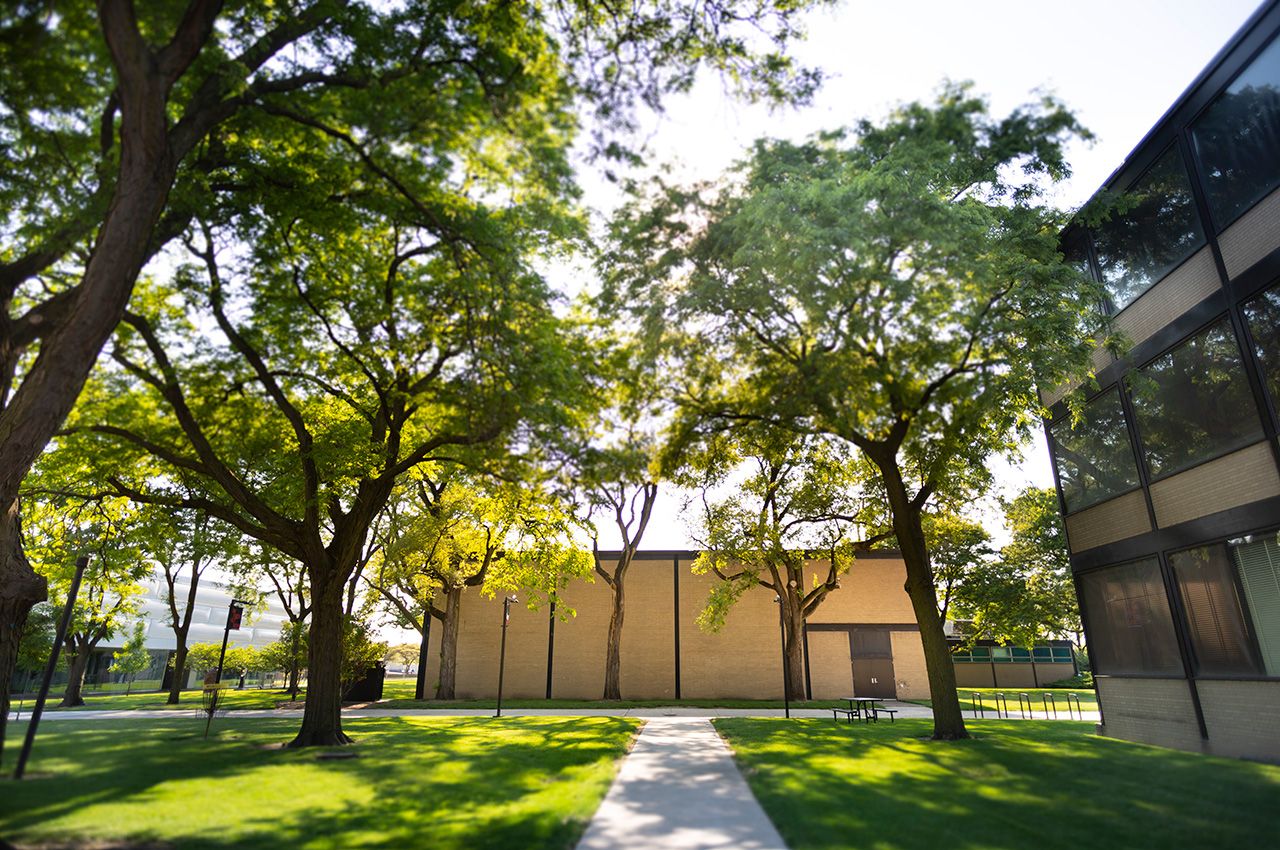A $2 Million Step Toward a Tree-Tastic Mies Campus

The nearly two thousand trees flourishing on Illinois Institute of Technology’s Mies Campus offer respite and natural beauty in the midst of Chicago, and a $2 million gift from Alphawood Foundation Chicago will bring the university’s landscape to new heights.
College of Architecture students Jessie Flatley (M.L.A ’22), Erik Schiller (M.ARCH+M.L.A ’22), and Johann Friedl (M.L.A. 5th Year) began searching for a way to celebrate the campus’ canopy with the ArbNet Arboretum Accreditation Program. Their initial work, under the direction of Professor of Landscape Architecture and Urbanism Ron Henderson, has earned the university a national accreditation, founding the Alphawood Arboretum at Illinois Institute of Technology.
“Mies Campus has a landscape personality and character that we want to reinforce,” Henderson says. “This demonstrates the university’s commitment to environmental action, ethics, and integrity.”
Observant Illinois Tech visitors can spy 68 tree species among the university grounds. Alphawood’s grant of $2 million will go toward boosting that number to 100.
“Alphawood Foundation Chicago is thrilled to partner with Illinois Tech on its campus arboretum plan,” Alphawood Executive Director Chirag Badlani says. “Our hope is for students, faculty, staff, and the community to come together to further cultivate and preserve this incredible landscape—strengthening the ties between the historic campus and the Bronzeville community.”
The $2 million gift includes a new arboretum manager position, lecture and outreach support, and tree planting and maintenance. Mies Campus is the second educational institution in Chicago to be accredited and the first arboretum on Chicago’s South Side. It joins only a handful of Chicago parks, including Garfield Park Conservatory and Lincoln Park, to receive the designation.
Illinois Tech easily met the first accreditation requirement of 25 tree types. Achieving arboretum Level 2 status requires 100 species on campus, though the program is more than the number of tree types. Public access and education celebrating the importance of trees on campus is vital for accreditation and Illinois Tech students, Henderson says.
“This generation of students is expecting environmental activism, and arboretum status demonstrates that as a credential. It’s a platform for studying climate change, urban tree canopies, and global pathogens, all in Chicago,” Henderson says.
To further bring education and research into the program, trees from southern states will be planted on campus to understand how non-indigenous species react to global warming in Chicago. “It’s a climate change lab. It will give us the opportunity to test some more southerly species in an urban environment,” Henderson says. The landscape architecture graduate program will explore sites on the Mies Campus to determine suitable locations for dozens of new trees, while also providing new landscapes for student life outdoors on the campus.
The College of Architecture and the Facilities Department worked together to establish the plan, program, and budget for the creation and stewardship of the arboretum in yet another example of collaboration between academic departments and operations staff at the university. Earlier collaborations have resulted in the campus microgrid, solar energy generation, and research advancing the field of indoor air quality. These are a part of Illinois Tech’s continuing commitment to innovation and collaboration in advancing environmental quality.




